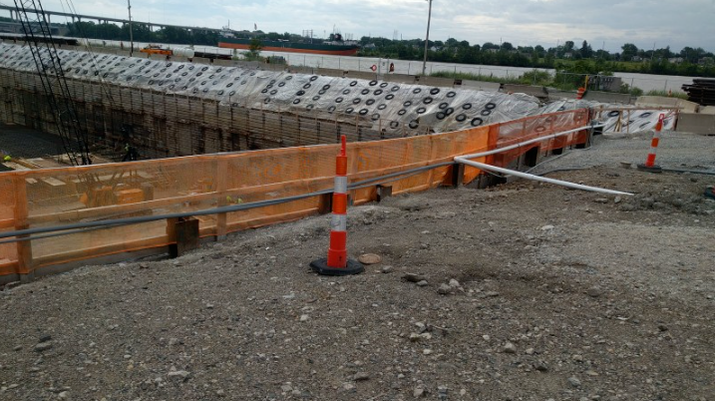Civil Geotechnical Engineering Providers for Commercial and Residential Projects
Civil Geotechnical Engineering Providers for Commercial and Residential Projects
Blog Article
How Consulting Engineers Enhance Geotechnical Design Projects: Insights Into Their Experience, Methodologies, and Collaborative Approaches
Consulting engineers are crucial in boosting geotechnical design tasks, applying their specialized understanding to browse the intricacies of subsurface problems. Their methodologies include a variety of website investigation techniques, consisting of Requirement Penetration Examinations (SPT) and Cone Infiltration Examinations (CPT), which inform essential choices during the design and construction phases. Their collaborative methods foster interaction amongst varied task stakeholders, ultimately shaping the project's trajectory. As we analyze the diverse roles these professionals play, it comes to be clear that their payments extend past technical knowledge, triggering a closer consider the implications for project success.
Function of Consulting Engineers
The experience of getting in touch with engineers in geotechnical design is essential to the effective execution of construction projects. These experts play an essential role in analyzing soil and rock homes, which are essential variables influencing layout and construction decisions. By carrying out thorough site investigations, consulting engineers gather essential data that informs the layout procedure, making certain jobs are improved stable and suitable ground.
Consulting engineers additionally supply vital insights into danger monitoring (geotechnical geologist). They determine possible geotechnical hazards, such as landslides, dirt liquefaction, and settlement issues, making it possible for stakeholders to carry out reliable mitigation strategies. Their experience aids in optimizing foundation layouts, which can lead to considerable cost savings and improved security
Furthermore, speaking with engineers act as an important link between task owners, designers, and specialists. Their capability to equate intricate geotechnical information into workable referrals fosters collaboration and promotes notified decision-making throughout the job lifecycle. This multidisciplinary approach not just boosts job performance however additionally makes certain conformity with regulative standards and best methods.
Key Methods in Geotechnical Engineering

One main methodology is website examination, which includes performing field examinations and laboratory evaluations to gather information on subsurface conditions. Methods such as Criterion Penetration Screening (SPT) and Cone Infiltration Testing (CPT) are widely used to examine soil stratigraphy and strength. In addition, geophysical approaches, including seismic and electric resistivity surveys, offer non-invasive means to analyze subsurface characteristics.
One more vital method is numerical modeling, which enables designers to imitate various situations and anticipate exactly how soil-structure communications will behave under various loading conditions. Finite Aspect Analysis (FEA) is a common approach utilized in this context.
Additionally, the style of foundations, preserving frameworks, and earthworks counts greatly on these methods - geotechnical geologist. By incorporating sophisticated logical tools with field information, consulting designers can establish customized options that deal with particular project challenges, ultimately adding to the find out here now security and safety of building jobs
Significance of Dirt Analysis
Soil analysis offers as a fundamental element in geotechnical design, supplying essential insights right into the physical and chemical buildings of soil required for efficient building preparation. Comprehending dirt qualities is important for determining its load-bearing ability, drainage actions, and possibility for negotiation or instability. Thorough dirt investigations, consisting of sampling and research laboratory testing, help recognize specifications such as soil kind, wetness content, thickness, and shear stamina.
These evaluations educate the option of appropriate construction strategies and materials, ultimately influencing task security and durability. Natural soils may require various foundation layouts compared to granular dirts, demanding customized design remedies. Dirt analysis help in recognizing pollutants that can pose threats to human wellness or the environment, permitting for the development of reduction strategies.
Including soil evaluation right into the onset of job growth helps to reduce unexpected obstacles, making sure that designers can prepare for and deal with prospective problems before they intensify. By developing a detailed understanding of the website problems, seeking advice from engineers can maximize layout effectiveness and decrease costs, consequently boosting the general success of geotechnical design jobs.
Joint Techniques in Projects
Successful geotechnical projects usually pivot on collaborative approaches that unite varied expertise from numerous disciplines. Reliable cooperation amongst consulting engineers, rock hounds, environmental researchers, and building experts is essential for dealing with complicated challenges and enhancing project results. By leveraging the one-of-a-kind skills and expertise of each staff member, jobs can gain from an alternative understanding of the website problems, regulatory requirements, and design restraints.
Normal interaction and interdisciplinary meetings assist in the sharing of understandings and cultivate a society of synergy. These joint initiatives enable the identification of prospective dangers check out this site early in the project lifecycle, allowing for prompt reduction strategies. Additionally, including comments from stakeholders, consisting of regional neighborhoods and regulative agencies, ensures that all perspectives are taken into consideration, enhancing task acceptance and conformity.
Furthermore, the assimilation of advanced modern technologies, such as Geographic Info Systems (GIS) and Structure Details Modeling (BIM), further boosts collaboration. These devices allow for the real-time sharing of data and visualization of geotechnical problems, advertising educated decision-making. Inevitably, a collaborative approach not only streamlines project execution but likewise lays the structure for innovative services to complicated geotechnical engineering difficulties.
Effect On Project Results

Consulting designers utilize innovative methodologies such as threat analysis and predictive modeling, which improve the accuracy of project projections. Their ability to incorporate cutting-edge modern technologies, like geotechnical instrumentation and data analytics, even more refines the style and building processes. As an outcome, jobs experience improved efficiency, reduced costs, and minimized hold-ups.
Additionally, fostering effective interaction and partnership among employee enhances analytical capacities. When obstacles emerge, a united front enables swift recognition of services, preventing possible setbacks. Eventually, the joint initiatives of speaking with engineers add to higher quality outcomes, ensuring that projects meet both regulative criteria and customer expectations.
Verdict

Report this page